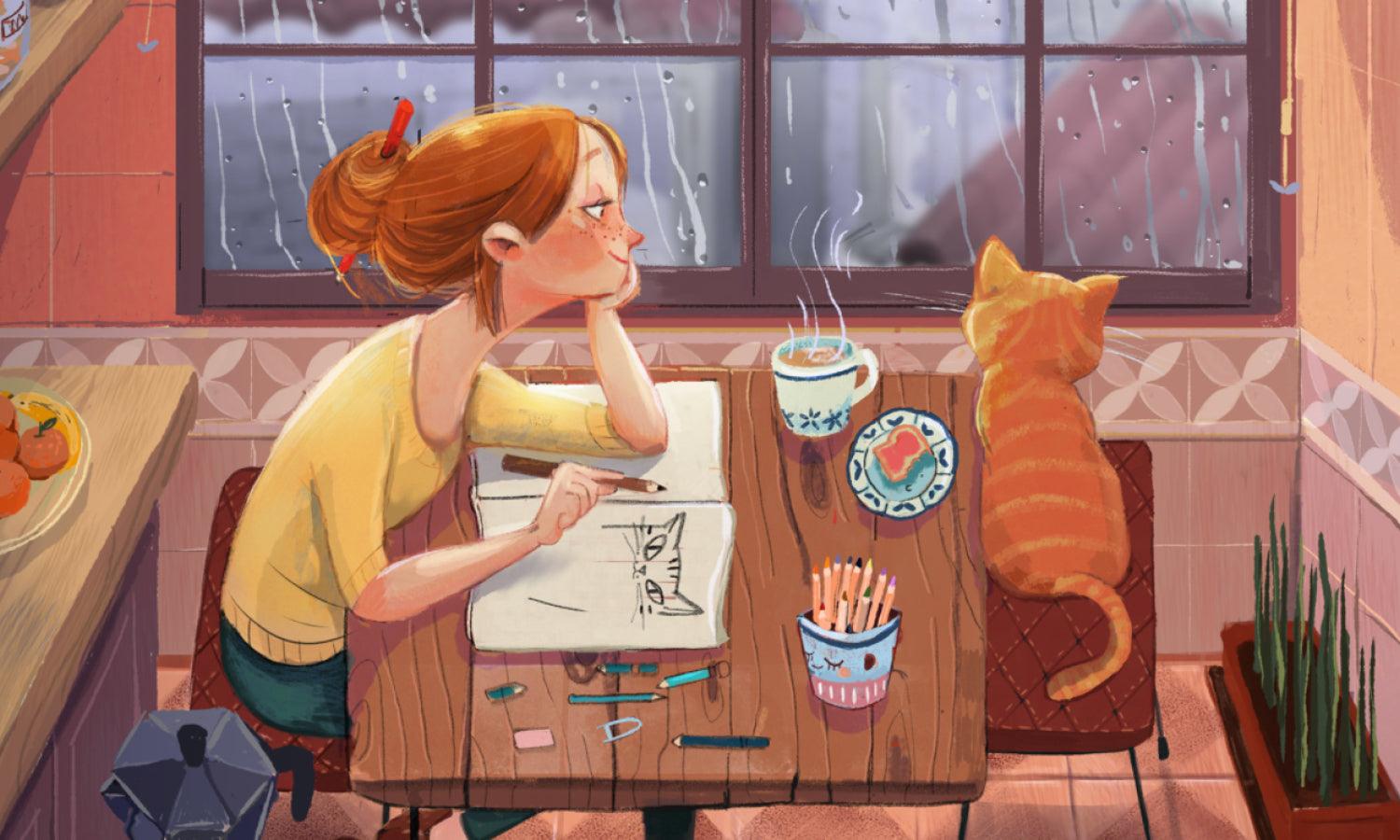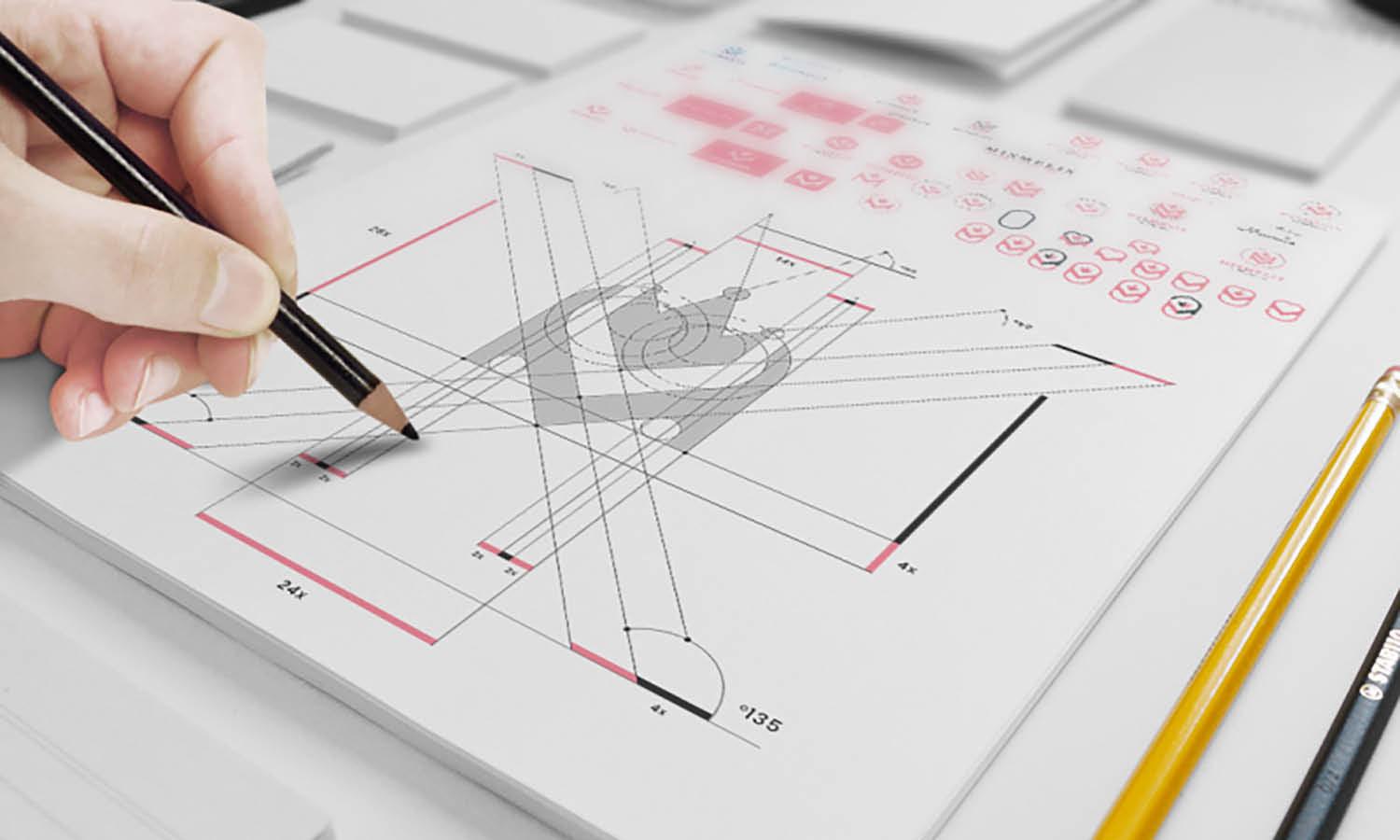10 Important Benefits Of Learning Calligraphy

Source: Olga_wndr, Instagram, https://www.instagram.com/p/B1y-JRxH-Hg/
Calligraphy, the timeless art of beautiful writing, is more than just a creative pursuit. Rooted in history and culture, it combines aesthetic design with the practical act of handwriting, creating a unique balance of artistry and discipline. Whether you’re a beginner exploring a new hobby or someone seeking a mindful activity, the benefits of learning calligraphy are both profound and far-reaching.
This elegant craft offers more than just a way to create visually appealing text. It enhances personal skills such as patience, focus, and fine motor control while opening doors to creative self-expression. As you practice calligraphy, you’ll discover that it fosters a deeper appreciation for the written word and inspires a sense of accomplishment.
In today’s fast-paced digital world, where typing has replaced handwriting for many, calligraphy offers a refreshing way to slow down and connect with your thoughts. It’s not just a skill but a journey of personal growth that enhances mindfulness and creativity. Whether pursued as a hobby, a therapeutic practice, or a professional endeavor, calligraphy has something to offer everyone.
In this article, we’ll explore ten important benefits of learning calligraphy, illustrating why this beautiful art form remains relevant and enriching in modern life.
Enhances Fine Motor Skills
One of the most practical and rewarding benefits of learning calligraphy is its ability to enhance fine motor skills. This art form requires precise hand movements, deliberate strokes, and careful attention to detail, all of which contribute to improved dexterity and hand-eye coordination.
Calligraphy is often likened to a workout for your hands. As you practice, your muscles grow more adept at controlling delicate tools like nibs, brushes, and pens. These repetitive, focused movements refine the small muscles in your fingers and wrists, which are essential for tasks requiring precision, such as drawing, crafting, or even everyday handwriting.
For individuals recovering from hand injuries or looking to strengthen their fine motor skills, calligraphy can serve as an effective and enjoyable therapeutic activity. The steady practice encourages muscle memory, enabling the hand to execute intricate patterns with ease over time.
Moreover, the benefits extend beyond physical improvement. As you develop control and coordination, you may find it easier to perform other detailed tasks, from typing efficiently to playing musical instruments. Children, too, can benefit from calligraphy by enhancing their handwriting and preparing their hands for academic tasks.
Boosts Patience And Focus
Learning calligraphy is more than creating beautiful letters; it is an exercise in patience and focus. Each stroke, curve, and flourish requires careful planning and deliberate execution, demanding the practitioner’s full attention.
In a world of instant gratification, calligraphy stands out as a practice that slows you down. It teaches you to embrace the process, not just the outcome. As you work through each line, you learn to handle mistakes gracefully and view them as opportunities for growth. This mindset helps build perseverance, a skill that extends beyond the art itself into everyday life.
Calligraphy’s structured nature also promotes mental discipline. The act of repeatedly forming letters and focusing on symmetry trains your mind to stay present and attentive. It’s akin to meditation, where the rhythm of writing serves as a tool to clear distractions and anchor your thoughts. Over time, this practice enhances your ability to concentrate for longer periods, a skill that’s valuable in both personal and professional settings.
Additionally, patience developed through calligraphy can lead to reduced stress levels. The act of slowing down and immersing yourself in a creative process can be incredibly therapeutic, providing a calm space to unwind from the pressures of daily life.
Improves Handwriting
One of the most noticeable benefits of learning calligraphy is its ability to improve your handwriting. Calligraphy places a strong emphasis on precision, structure, and consistency—three elements that directly translate into better handwriting.
When practicing calligraphy, you focus on forming each letter deliberately and methodically. This attention to detail helps identify and correct common handwriting issues, such as irregular spacing, inconsistent letter sizes, or shaky strokes. Over time, your muscle memory develops, allowing you to naturally write more clearly and legibly.
Calligraphy also teaches proper penmanship techniques, such as maintaining a steady hand, using appropriate pressure, and understanding the flow of ink on paper. These skills enhance your ability to write smoothly and consistently, even outside of artistic projects.
For students and professionals, improved handwriting can make notes and documents more organized and visually appealing. A legible and elegant writing style creates a positive impression, whether you're writing a personal letter, signing a card, or jotting down quick notes.

Source: Luislili, Instagram, https://www.instagram.com/p/BorUDBtBd05/
Encourages Creativity
Each calligraphy style, from elegant copperplate to bold modern lettering, provides an opportunity to experiment and personalize your work. As you practice, you develop a unique aesthetic sense, blending traditional techniques with your own creative ideas. This process allows you to turn simple words into intricate works of art, whether for personal projects or professional designs.
Calligraphy encourages you to think outside the box. From choosing the right paper and ink to designing layouts and embellishments, every aspect of this art form fosters creative decision-making. It’s a hands-on activity where you can explore color combinations, flourishes, and textures, allowing your imagination to shine.
Moreover, calligraphy is not confined to paper. It can be applied to various creative fields, such as graphic design, branding, and even home décor. Many practitioners find joy in creating custom invitations, greeting cards, or wall art, infusing their personal style into each piece.
Builds Confidence
One of the significant benefits of learning calligraphy is how it builds confidence. The journey of mastering this intricate art form involves overcoming challenges and achieving milestones, which fosters a strong sense of accomplishment.
Calligraphy requires dedication and practice. As you improve, you’ll notice the progress in your skills, from forming consistent strokes to creating complex letterforms. Each success, no matter how small, reinforces your belief in your ability to learn and grow. This gradual improvement is a powerful confidence booster, motivating you to take on more advanced techniques or creative projects.
The tangible results of your efforts—beautifully crafted letters and designs—serve as a visible reminder of your hard work and determination. Sharing your creations with others, whether as gifts, decorations, or commissioned pieces, further enhances your self-esteem as you see the positive impact your work has on those around you.
Additionally, calligraphy encourages self-expression, allowing you to develop a unique style that reflects your personality. The freedom to create something entirely your own instills a sense of pride and individuality, key components of self-confidence.
Promotes Stress Relief
One of the most rewarding benefits of learning calligraphy is its ability to promote stress relief. The repetitive, intentional motions required in calligraphy create a calming rhythm that can help quiet the mind and reduce feelings of anxiety.
Calligraphy encourages you to slow down and focus on each stroke, shifting your attention away from external stressors. This mindful engagement in the creative process has meditative qualities, helping to clear mental clutter and bring a sense of peace.
The act of creating something beautiful also has therapeutic effects. Watching your designs take shape on paper provides a sense of accomplishment and joy, counteracting the negative emotions that often accompany stress. Moreover, the tactile experience of holding a pen, feeling the flow of ink, and working with textured paper adds to the sensory relaxation that calligraphy provides.
Even short calligraphy sessions can have noticeable benefits, making it a practical and accessible way to unwind after a busy day. Over time, incorporating calligraphy into your routine can contribute to improved emotional well-being, helping you manage stress more effectively.
Enhances Memory Retention
One of the lesser-known but highly valuable benefits of learning calligraphy is its ability to enhance memory retention. The process of writing by hand, especially in an artistic and deliberate manner, engages the brain more actively compared to typing or simple note-taking.
Calligraphy requires you to focus on the details of each letter and word, creating a stronger connection between your thoughts and physical movements. This connection reinforces memory pathways, making it easier to retain and recall information. For instance, writing a favorite quote or important notes in calligraphy helps embed the content more deeply into your mind.
The art of calligraphy also encourages repetition, which is a proven method for strengthening memory. Practicing letterforms, writing passages, or designing layouts involves revisiting the same concepts multiple times, reinforcing knowledge in the process.
Studies have shown that the tactile and visual aspects of handwriting stimulate the brain in ways that typing cannot. Calligraphy takes this a step further by combining creativity with structured practice, making it an even more effective tool for memory enhancement.

Source: Luislili, Instagram, https://www.instagram.com/p/Bcs771ZndYy/
Teaches Discipline
Learning calligraphy is a journey that inherently teaches discipline. The intricate nature of this art form requires consistent effort, attention to detail, and a commitment to improvement, all of which cultivate a strong sense of self-discipline.
Calligraphy demands patience, as mastering the precise strokes and letterforms takes time and practice. Early attempts may not always yield perfect results, but perseverance and a willingness to learn are key. This process helps develop the habit of dedicating time to practice, building a structured routine that strengthens your focus and determination.
The step-by-step nature of calligraphy also emphasizes the importance of gradual progress. Each new skill, from mastering basic strokes to creating advanced compositions, reinforces the value of steady effort over time. This mindset extends beyond calligraphy, influencing other areas of life where discipline and consistency are essential.
Develops Aesthetic Appreciation
As you study calligraphy, you learn to recognize and value the intricacies of different scripts, styles, and historical influences. From the flowing elegance of cursive lettering to the bold precision of modern calligraphy, each style teaches the importance of proportion, symmetry, and visual harmony. These principles extend beyond calligraphy, influencing your perception of design in other areas such as architecture, fashion, and graphic art.
Calligraphy also encourages a connection to the materials used. The texture of paper, the flow of ink, and the design of tools become part of the creative experience, fostering an appreciation for craftsmanship. This awareness helps you view art and design not just as functional but as a meaningful expression of culture and creativity.
By immersing yourself in calligraphy, you not only create beautiful works but also gain a broader understanding of artistic composition and visual aesthetics. This heightened sense of beauty enriches your creative perspective, allowing you to appreciate and contribute to art in all its forms.
Offers Career And Hobby Opportunities
Learning calligraphy opens a world of opportunities, both as a professional career and a fulfilling hobby. The demand for skilled calligraphers spans various industries, making this art form a valuable and versatile skill.
Professionally, calligraphy can be applied in fields such as graphic design, event planning, and branding. Businesses often seek calligraphy for creating elegant logos, signage, or packaging designs that stand out. Additionally, the wedding and event industry heavily relies on calligraphers for crafting bespoke invitations, place cards, and menus, providing a steady stream of creative projects.
Calligraphy is also a sought-after skill in the world of personalized gifts and keepsakes. Custom-designed quotes, greeting cards, and wall art are just a few examples of the unique products calligraphers can offer to clients. With the rise of e-commerce platforms, many artists have turned their passion for calligraphy into thriving online shops
For those not pursuing calligraphy professionally, it remains a rewarding hobby. It allows individuals to express their creativity, relax, and explore personal artistic projects. From journaling and scrapbooking to crafting home décor, calligraphy provides endless ways to incorporate beauty into everyday life.
Conclusion
The benefits of learning calligraphy extend far beyond the creation of beautiful lettering. From enhancing fine motor skills and improving handwriting to fostering creativity and relieving stress, this timeless art form offers countless personal and practical rewards. It builds confidence, teaches discipline, and even opens doors to career and hobby opportunities. Moreover, calligraphy deepens your appreciation for art, design, and the written word, enriching your perspective on beauty and craftsmanship. Whether pursued for personal growth, professional development, or sheer enjoyment, calligraphy is a valuable skill that continues to inspire and transform those who take the time to master it.
Let Us Know What You Think!
Every information you read here are written and curated by Kreafolk's team, carefully pieced together with our creative community in mind. Did you enjoy our contents? Leave a comment below and share your thoughts. Cheers to more creative articles and inspirations!
















Leave a Comment